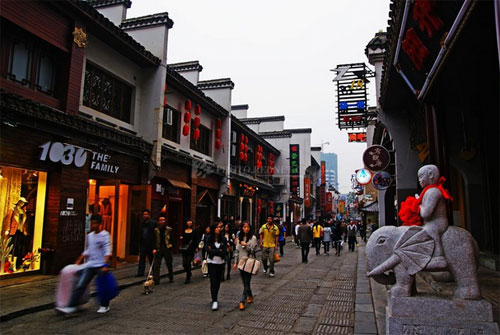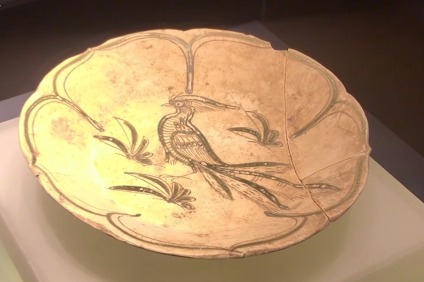Taiping Street
(en.changsha.gov.cn)
Updated: 2014-08-05

On weekends, simple and unsophisticated residents – especially the elderly, in twos and threes – spend their leisure time in the old alleys off Taiping Street. Their lives are so carefree that the street’s scene feels like a static painting.
Rich in stories, the old street is located in the southern part of Changsha’s old town. The block is bordered by Wuyi Avenue on the north, Jiefang Road on the south, Weiguo Street on the west, and Sanxing Street and Santai Street on the east. With a total area of 12.57 hectares, 375 meters in length and only 7 meters in width, the fishbone-shaped block hasn’t change at all over the past 200 years.
Since the Warring States periods (475 or 403-221BC), Taiping Street has been the center of Changsha. It was the location of a number of famous residences during the Qin (221-207BC) and the Han (202BC-220AD) Dynasties. Patriotic poet Quyuan (340-278BC) and Counselor Jiayi, a conspicuous statesman and writer during West Han Dynasty also lived here. Among the historical sites that can be found here are the former residence of Jiayi, the site of mansion of Prince Mingji of the Ming Dynasty (1368-1644), and the site of Progressive Society, founded during 1911 Revolution. Over hundreds of years, it has been a thriving commercial center, and regarded as the carrier of Hunan folk customs and traditions. Since the Jiaqing period (1796-1820) in the Qing Dynasty, it has been a central rendezvous point for businessmen. Stores such as Lisheng Salt Shop, Laotongyi Paint Shop, Liangyisheng Inn, Mobil Bank, and the Farmer’s Bank have offices here. As the location of Changsha’s wholesale market, Taiping Street is also regarded as the busiest area in Changsha proper. The Street is the epitome of ancient Changsha. It’s easy to notice the antique architectures built along the street. The buildings are characterized by small grey tiles, pitched roofs, white ridge tiles, fire seals, wooden doors and windows, stone gates, grey brick walls, roofless inner courtyards, and guardrails. Nowadays, the shops and old-styled residences along the street still maintain their older look.
Changsha seeks to revive porcelain production
In recent years, the local government has sought to revive the region's long tradition in porcelain making and boost local industry with the cultural influence of ancient Tongguan kilns, which have a history of 1,200 years.
Contact Us
Tel: +86(0731)-8401-8486
Add: No.19, Kaiyuan Rd, Xingsha, Changsha county

